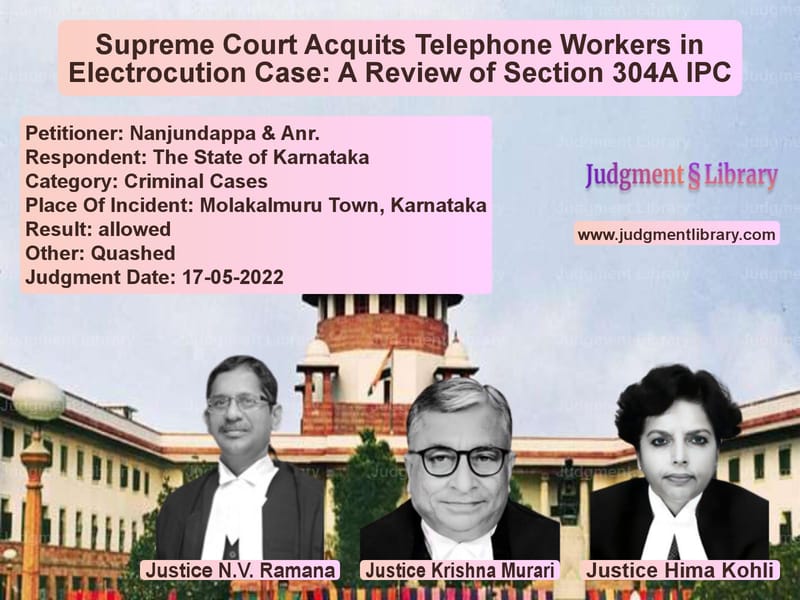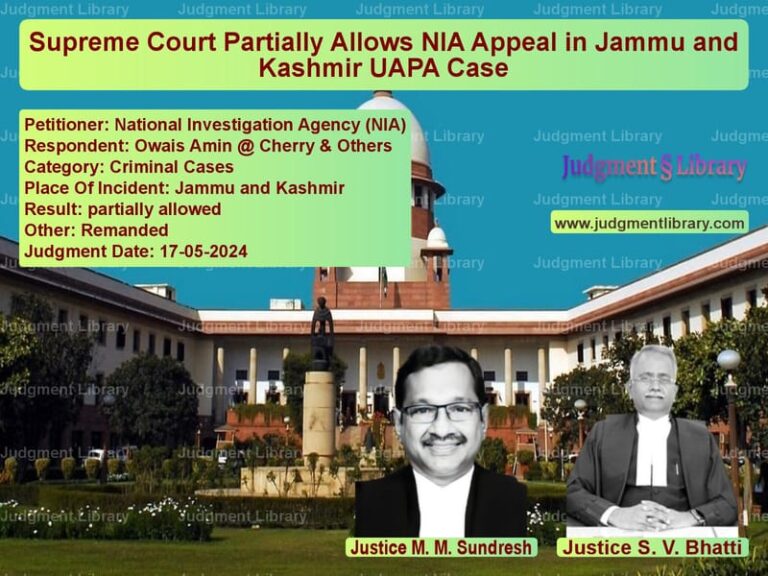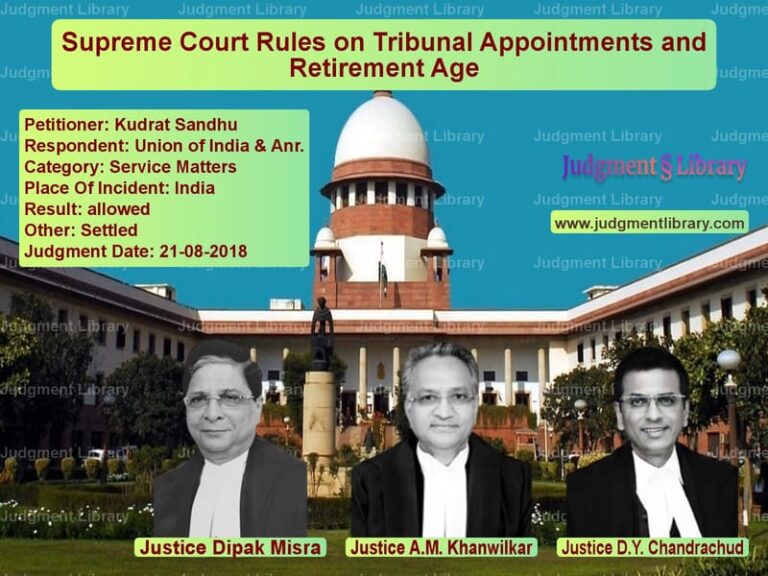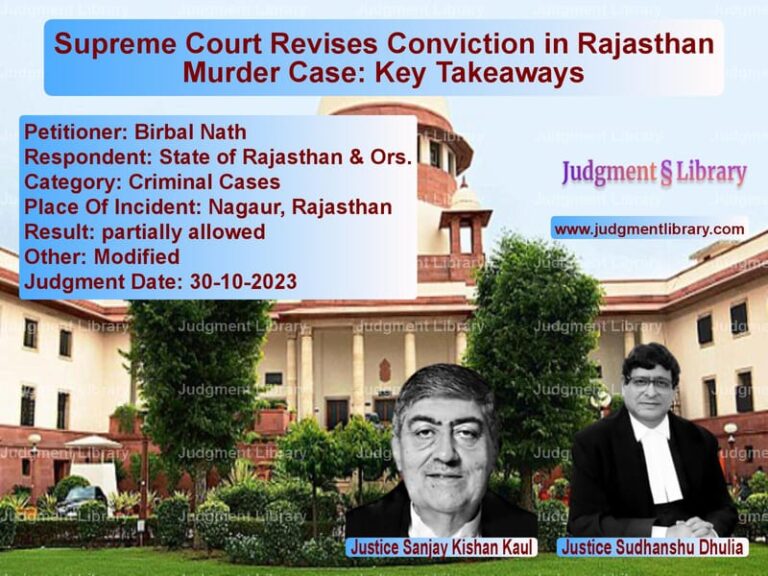Supreme Court Acquits Telephone Workers in Electrocution Case: A Review of Section 304A IPC
The Supreme Court of India recently overturned the conviction of two telephone department workers accused of negligence under Section 304A read with Section 34 of the Indian Penal Code (IPC). The case, Nanjundappa & Anr. vs. The State of Karnataka, involved the accidental electrocution of a man due to an alleged short circuit caused by the workers’ actions. The judgment highlights the importance of strong evidence in proving criminal negligence and sets a significant precedent in circumstantial evidence cases.
Background of the Case
On November 21, 2003, at around 1:00 PM, the deceased, Uday Shankar, was watching television in his home in Molakalmuru Town when he heard a sudden noise from the TV. As he attempted to separate the entangled dish wire, TV connection wire, and telephone wire, he suffered a fatal electric shock. His right hand was burned, and he succumbed to his injuries instantly.
During the investigation, it was found that Appellant No. 2, a daily wage worker under the supervision of Appellant No. 1, was working on a telephone pole nearby. While pulling the telephone wire, it reportedly detached and came into contact with an 11KV power line, sending high-voltage current into the telephone wire. The prosecution argued that this caused a short circuit in the deceased’s home, leading to his electrocution.
Arguments of the Prosecution
- Appellant No. 1 (a telephone department employee) and Appellant No. 2 (a daily wage worker) were responsible for a negligent act, which led to the electrocution.
- The telephone wire detached from its connection, fell on the 11KV power line, and transmitted high-voltage electricity into the deceased’s house.
- Multiple police officers (PW9, PW10, and PW16) testified that they also felt electric current in their telephone sets in the police quarters.
- The post-mortem report confirmed that the death was due to “instantaneous cardiac arrest and paralysis of the brain stem secondary to shock.”
- The presence of burn injuries and electrical marks on the deceased’s body confirmed electrocution as the cause of death.
Arguments of the Defense
- The appellants denied working on the telephone wire in the area on the day of the incident.
- There was no direct evidence proving that the accused were responsible for the telephone wire touching the power line.
- The defense questioned how an 11KV current could pass through a telephone wire without melting it.
- They argued that no technical inspection report confirmed that the short circuit occurred due to the telephone wire.
- Appellant No. 2 had only minor abrasion injuries, which were inconsistent with exposure to high-voltage electricity.
Supreme Court’s Observations
- The Court noted that the prosecution’s case was based entirely on circumstantial evidence.
- It found it difficult to believe that an 11KV current could pass through a telephone wire without melting it or setting the house’s wiring on fire.
- The evidence from prosecution witnesses PW9, PW10, and PW16, who claimed they felt electric current in their telephones, was deemed hearsay and not credible.
- The Court ruled that without a technical inspection or expert report confirming the alleged short circuit, the prosecution’s claims were speculative.
- It also found inconsistencies in the claim that the deceased was electrocuted after switching off the main electricity supply.
Key Excerpts from the Judgment
The Supreme Court emphasized the need for caution in relying on circumstantial evidence, stating:
“For bringing home the guilt of the accused, prosecution has to firstly prove negligence and then establish direct nexus between negligence of the accused and the death of the victim.”
The Court further held:
“We find it difficult to see reason in the submission that telephone wires were able to carry current from an 11KV high tension line and did not immediately melt.”
Referring to past rulings, the Court reiterated:
“The prosecution must prove beyond reasonable doubt that the accused were responsible for the alleged negligent act.”
Final Verdict
- The Supreme Court acquitted both appellants, ruling that the evidence presented did not establish their guilt beyond reasonable doubt.
- The conviction and sentence imposed by the Trial Court and High Court were set aside.
- The appellants were discharged from their bail bonds.
Conclusion
This case serves as a crucial reminder that circumstantial evidence must be conclusive and leave no room for doubt. The Supreme Court’s verdict reinforces the principle that criminal negligence must be proved beyond reasonable doubt, and mere suspicion or possibility is insufficient for conviction.
Petitioner Name: Nanjundappa & Anr..Respondent Name: The State of Karnataka.Judgment By: Justice N.V. Ramana, Justice Krishna Murari, Justice Hima Kohli.Place Of Incident: Molakalmuru Town, Karnataka.Judgment Date: 17-05-2022.
Don’t miss out on the full details! Download the complete judgment in PDF format below and gain valuable insights instantly!
Download Judgment: nanjundappa-&-anr.-vs-the-state-of-karnata-supreme-court-of-india-judgment-dated-17-05-2022.pdf
Directly Download Judgment: Directly download this Judgment
See all petitions in Negligence Claims
See all petitions in Bail and Anticipatory Bail
See all petitions in Judgment by N.V. Ramana
See all petitions in Judgment by Krishna Murari
See all petitions in Judgment by Hima Kohli
See all petitions in allowed
See all petitions in Quashed
See all petitions in supreme court of India judgments May 2022
See all petitions in 2022 judgments
See all posts in Criminal Cases Category
See all allowed petitions in Criminal Cases Category
See all Dismissed petitions in Criminal Cases Category
See all partially allowed petitions in Criminal Cases Category







